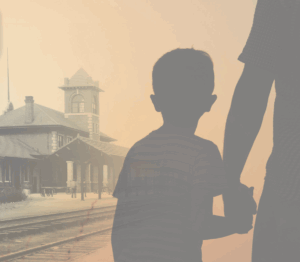
Building families’ futures
Sherry Heitmeyer wipes sweat off her sun-kissed forehead.
It is just before noon on a late October day, but clear skies have brought the temperatures into the mid-70s.
The weather, she says, is perfect for the task at hand.
And having completed similar jobs everywhere from South Texas and the Everglades to Maine, she has a solid basis for comparison.
She is one of the “caravaners” — a group that travels the country seeking out opportunities to help in the construction of Habitat for Humanity homes.
Her residence might be in Northwest Ohio, but for the time being, she considers herself a Wayne County resident.
“You live in a community, and you become a part of it. You go to church there. You buy groceries there. You go to the post office,” she said. “It is, ‘Oh my gosh. We have learned so much about our country doing this.’”
Some who drive by dual sites on Marshall Street only see a future home.
But for Sherry, each of the 50 Habitat houses she and her husband have put their hands on represents more than another dwelling.
For the Heitmeyers, crossing the United States to help fulfil Habitat’s mission is about changing the lives not just of the man or woman who will, ultimately, take possession of the home, but of the generations of current and future family members they hope will see the world through a new lens because they had an opportunity to grow up in a place of their own.
“The joy on a little child’s face when they have their own bed,” Sherry said, choking up. “We were given that by our parents. You know, our neighbors helped raise us. We come from that type of community. And when you can go in and be a part of a community that’s doing that for another family, it’s incredible.”
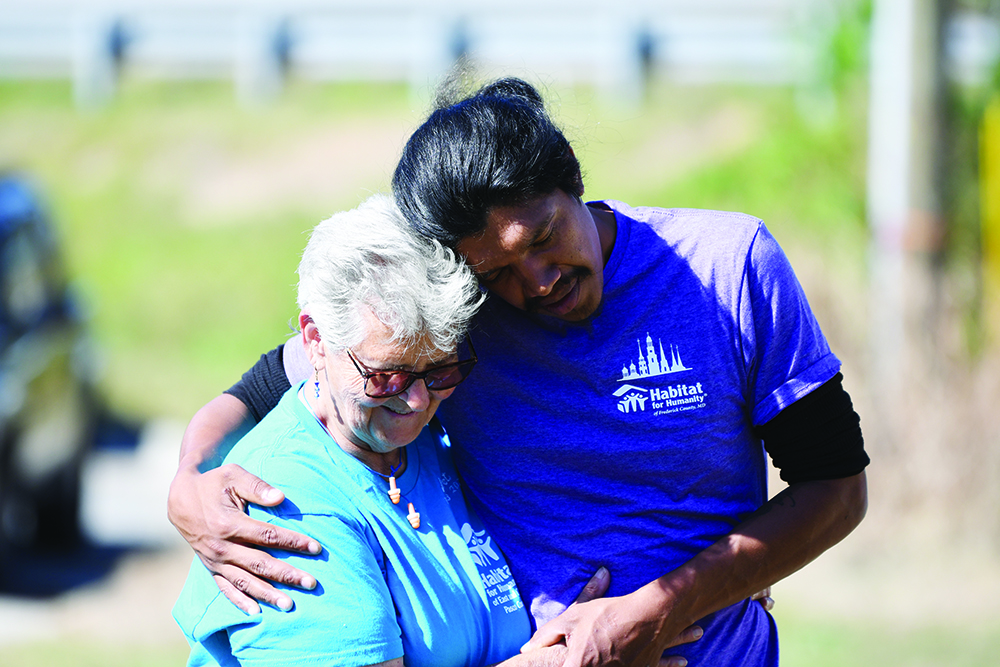
Matthew Whittle understands the impact Habitat for Humanity of Goldsboro-Wayne has made on the lives of those who have purchased homes through the organization he leads as executive director.
He can see why so many people gravitate toward the nonprofit when the urge to volunteer strikes them.
“The thing that appeals to folks … is that we’re addressing such a basic human need. I mean, everybody needs shelter. Everybody needs and desires a good place to lay their head down at night,” he said. “So, the idea that we’re able to provide that opportunity for affordable home ownership, that’s the American Dream.”
And he believes that the fact that Habitat is not simply offering a handout appeals to those who want to serve their community.
“We’re not giving homes away. We’re partnering with families,” he said. “They are helping to build the homes. They are buying the homes. It is the proverbial hand up, not a handout. That’s appeals to people — knowing that they’re working not for somebody, but they are working with our families.
The model seems to be working.
This year alone, more than 900 volunteers have spent nearly 18,000 hours constructing and repairing homes through Habitat.
Six of those homes were completed — inching the organization closer to its 100th closing since 2001.
“The countdown is on … for us to finish and close house No. 100. That’s a major milestone coming up and we’re excited about that,” Whittle said. “But even now, we have already begun preparations … on home No. 101. We are already looking beyond what we’ve accomplished. We’re excited about this milestone of 100 coming up and we want people to come celebrate with us … hopefully sometime in that February timeframe, but the big thing that we’re going to start talking about … is the fact that 100 families, that’s wonderful. But it’s not going to take us 22 years to build the next 100 homes. We’re doing more. We’re building more. We’re serving more families. But we can only do that with community support.”
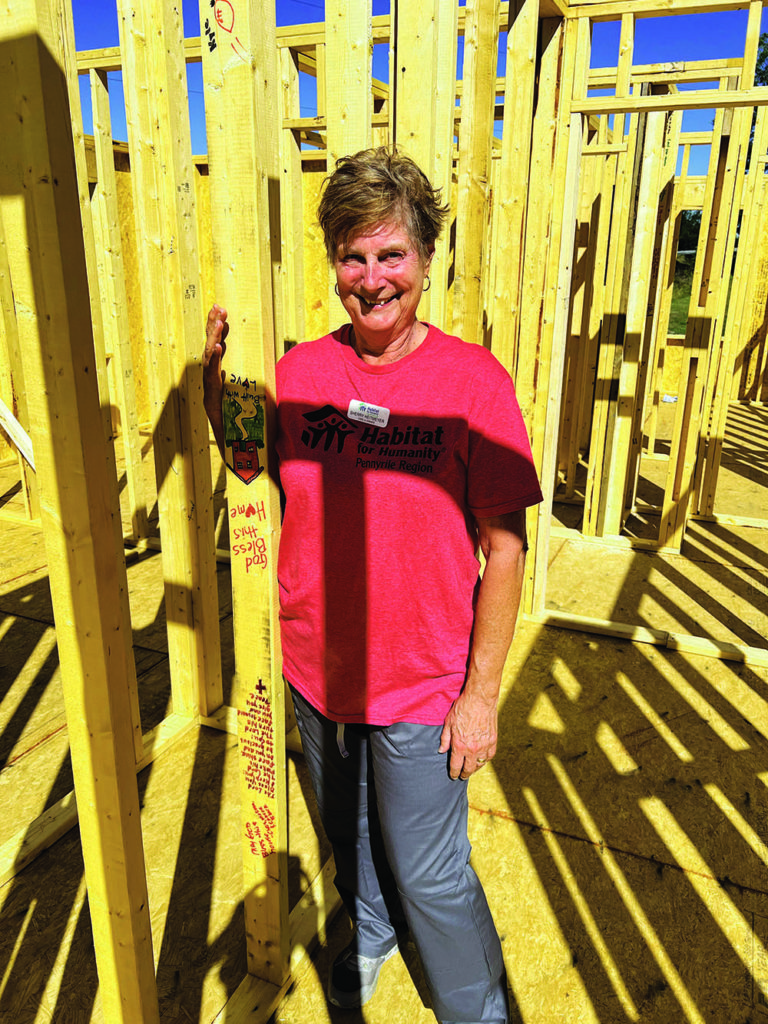
Sherry has faith that the Goldsboro-Wayne Habitat will continue to change lives in what she characterized as one of her favorite of the many adopted hometowns she has claimed over the last 13 years.
There is something different, she said, about how volunteers are embraced in this particular community — from free camping offered at the Wayne County Fairgrounds to lunches and waters provided at the build sites.
“Whether it’s the churches feeding us lunches or the homeowners and how grateful they are … they go way overboard here. Not a lot of places can do that or will do that, so when we’re here, we know that we’re appreciated,” she said. “That’s what keeps us going.”
Whittle credits community partners for making Wayne County a must-visit destination for Habitat caravaners.
It’s the staff at the fairgrounds who open their site to out-of-towners without the expectation of payment in return.
It’s local businesses and restaurants that “say yes when we call.”
It’s the churches and residents who cook meals and donate water.
“It’s all those people in the community that allow us to make Wayne County a welcoming place they want to come back to every year,” Whittle said. “And the fact that (the caravaners) are willing to come and volunteer their time in a community that isn’t their own — to work with people who are not their natural neighbors — it’s humbling for us.”
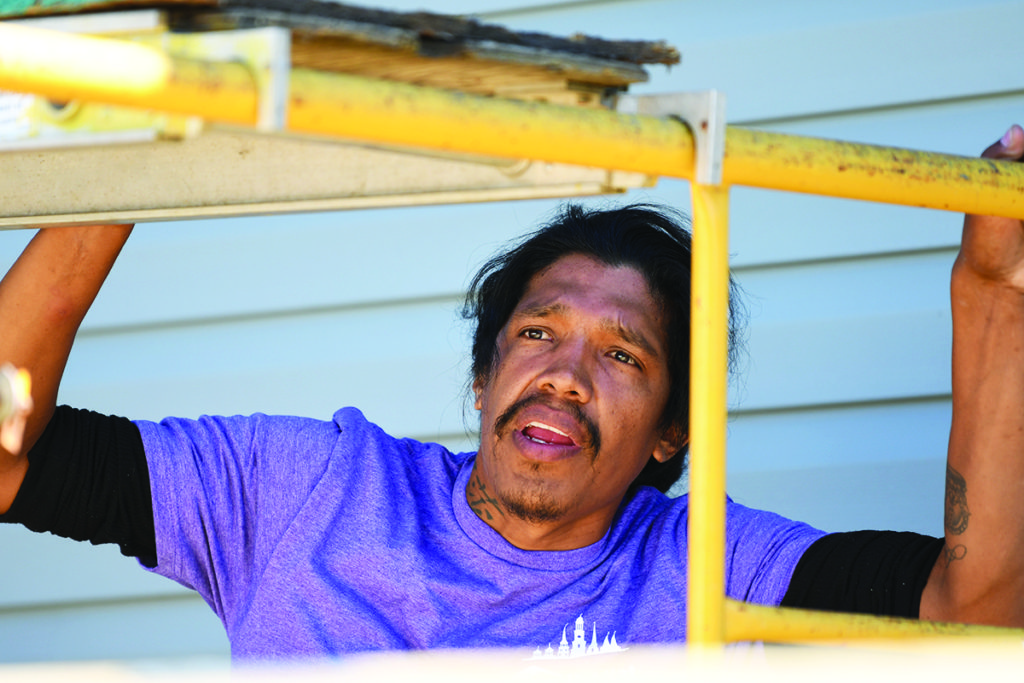
Sherry knows that she and her husband will leave town before that home on Marshall Street is complete.
They won’t be there to watch as its new owner takes possession of the keys.
But the promise of witnessing those moments is not why they chose to spend their retirements jumping from state to state and site to site.
“Usually, we’re just coming in for a piece of it. So, we don’t get to see the end. We don’t get to see it become a home. It’s just a structure going up,” she said. “So, a lot of people don’t understand. They say, you know, what are we getting out of that? It’s a feeling of joy that’s just hard to describe.”
Just then, she has an idea.
She walks toward the under construction home going up next door — what will be, once it is completed, the local Habitat’s milestone 100thhome — and points to some of the beams.
Written on one, in colored marker, is a Bible verse.
On another, someone has drawn a heart next to a home.
For Sherry, the symbolism is poignant.
“Once the walls go up, the homeowners won’t be able to see these messages,” she said.
But those who took the time to decorate that wood will always know they were a part of something bigger than themselves.
So, too, will Sherry — whether she sees the finished product or not.
Whittle believes she and the other caravaners will ultimately see the fruits of their labor, thanks to the hospitality of the community that adopts them for a few weeks each year.
“I think there’s something to be said for, you know, when someone volunteers on a Habitat site … when they walk away at the end, they have something they can see that they accomplished. They can see the walls that they built. They can see roofs that were put on,” he said. “And even better than that, as the caravaners come back every year, they can see families living in the homes they built. They drive by these homes … and see the basketball goal in the yard. They see the bikes leaning up against the front porch. They know there’s a family living in that house and that they helped that family build a future for themselves — a better future for themselves — and they know they had a part in that. That is a universally appealing thing.”

A loaded discussion

Fighting for their lives

Goldsboro loses a giant
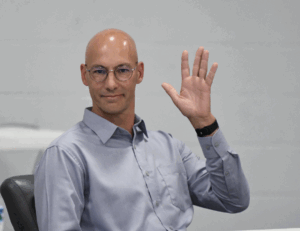
“I’m a flippin’ hurricane!”
Public Notices — Dec. 21, 2025

Belting it out

Legendary

Final Four!


